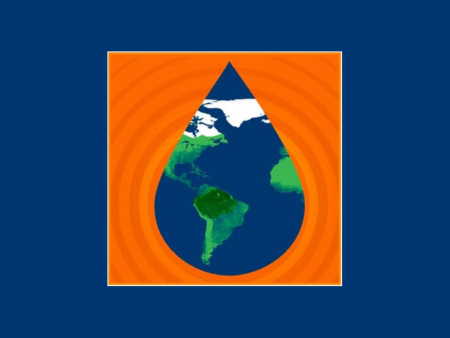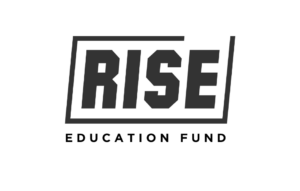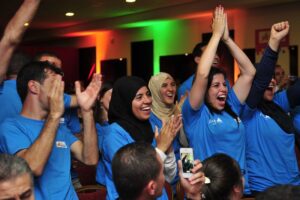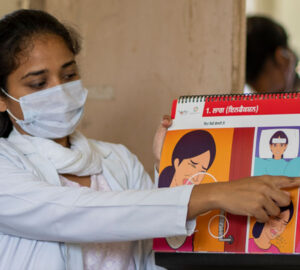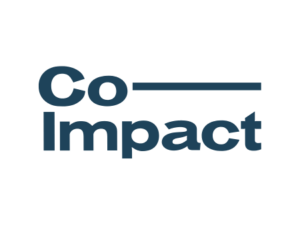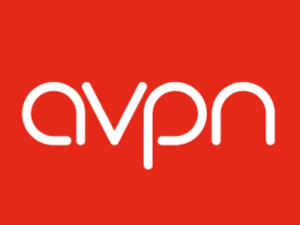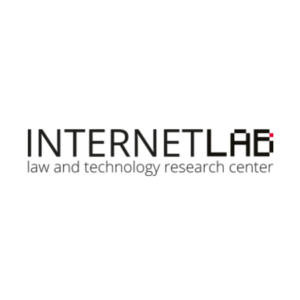Uma Gota No Oceano aims to strengthen the perspective of traditional peoples and communities within public debates, support communication professionals and strengthen networks of local communicators.
Maria Paula Fernandes from Uma Gota No Oceano spoke with Ambika Samarthya-Howard on June 6, 2025. Click here to download and read the full interview.
Ambika Samarthya-Howard: Can you start by introducing yourself and the work you do?
Maria Paula Fernandes: I’m Maria Paula, founder of Uma Gota No Oceano. Before that, I was a journalist for 40 years, working for Brazil’s leading media outlets. I started as a reporter at Jornal do Brasil, the most important left-wing newspaper at the time, and then moved to O Globo.
Ambika Samarthya-Howard: You left the media and journalism world to start a nonprofit?
Maria Paula Fernandes: Yes, but this transition was the result of a broad and diverse career in communications. Before founding Uma Gota No Oceano, I worked at MTV Brasil and TV Globo. I left Globo to develop Saia Justa, a program with an innovative feminine approach, where women debated topics such as politics, economics, and culture with a chat-like approach, something at the time (2002), still rare on Brazilian television.
Later, I was invited to return to Globo, but no longer as a journalist. I began working on developing content formats, at a time when the network was beginning to reflect on the impacts of the internet and the arrival of 4G on communications. I participated in meetings with leading industry figures, such as David Lynch and professionals involved in the production of Avatar. The network brought together thinkers and creators to discuss the future of communications—and I was there, absorbing everything.
This experience was fundamental to the creation of the Movimento Gota d’Água campaign in 2011. But the decision to move into the nonprofit sector came after Marina Silva’s 2010 presidential campaign. Lacking resources, she used only Facebook and won 20% of the vote with positive, transparent, and non-aggressive communication. That touched me deeply. I decided to use everything I had learned throughout my career to give something back to society.
In that context, Dilma Rousseff was elected president by the Workers’ Party (PT) after strongly advocating for the resumption of construction of the Belo Monte dam. Marina Silva, then Minister of the Environment, left the government in disagreement with the project.
I used all the mass media tools available to me. At the time, algorithms didn’t exist like they do today, so it wasn’t possible to pay to reach an audience. I applied everything I learned at Globo and MTV to launch the first campaign, as an experiment. It was a campaign against Belo Monte. In just one week, we had one million signatures.
The campaign spread to 20 countries. People from different places translated the content into five languages and began using it independently. It was a spontaneous movement that demonstrated the power of communication when it’s done with purpose, sensitivity, and strategy.
Ambika Samarthya-Howard: Was this campaign you started a climate campaign?
Maria Paula Fernandes: The campaign focused on the impacts of the construction of the Belo Monte hydroelectric plant on the Xingu River. Although it wasn’t directly conceived as a climate campaign, it addressed profound environmental issues, especially the lifestyles of indigenous communities and ecosystems in the Amazon.
At that time, after following Marina Silva’s mobilization in 2010, I felt it was possible to use media and the internet to broaden public debate. Jornal Nacional, the country’s main news program, had aired a special series on Belo Monte, showing over one hundred scientific studies of areas and various criticisms of the project. That caught my attention: it was solid coverage that brought to light the reality of indigenous peoples—a reality often invisible to those living in large urban centers like Rio and São Paulo.
Many people were already speaking out against the project, but public opinion was not yet considered a relevant part of the process. For me, the campaign was a way to test how communication could act as a bridge between technical information and social engagement.
My career has always been linked to journalism, but also to the creation of formats that help convey complex topics to the public. I’ve worked in film, advertising, and writing, always seeking ways to reach people and broaden the reach of messages that need to be heard.
Ambika Samarthya-Howard: How long ago was that?
Maria Paula Fernandes: In 2011, we launched the campaign on November 15th, and a little over a month later, on December 22nd, we were invited to a meeting with President Dilma Rousseff at the Planalto Palace. We had collected 2.5 million signatures, requesting that the hydroelectric project be revised. The impact was much greater than we expected. But, more than the numbers, what truly marked us was the beginning of a relationship of trust with the Indigenous peoples.
From that moment on, they began to see us as allies in communicating with society. With the campaign’s recognition, the Ford Foundation also invited us to New York to share our experience with communicators working on Indigenous issues around the world. This also helped strengthen the support network around them.
It all happened very quickly. Later, the Indigenous people themselves invited us to accompany them to their annual mobilization in Brasília, the ATL, which until then had been perceived by much of society as “just another social movement complaining,” without understanding the uniqueness of their situation and the depth of their messages. The invitation actually came because there was tension with the Army, and they understood that if we were present with artists, it could act as a form of protection because in front of the cameras, there is no room for conflict.
This perception originated with them. Sonia Guajajara, who was beginning her leadership role at APIB, welcomed us with generosity and trust. We began attending the meetings and supporting the Indigenous organization. It was a carefully constructed process, not as external partners, but as part of the movement, as part of Sonia’s journey. Since then, we have helped strengthen her image and her voice, because she is, indeed, a brilliant leader.
Ambika Samarthya-Howard: There’s something special about your approach that’s sticking. What do you think it is that has made your work so successful?
Maria Paula Fernandes: I believe the uniqueness of our work lies in the way we integrate different elements. We strive to bring together, in a single strategy,
communication tools, traditional media values, and active listening to our partners. We don’t work in isolation—we build everything together, in constant dialogue with those around us.
Ambika Samarthya-Howard: Can you give me an example of what it means to put a media value into a narrative?
Maria Paula Fernandes: Of course. When I worked at TV Globo, I was a program editor, and an essential part of my job was monitoring the impact of content. At the network, everything is analyzed very rigorously. In my last position there, I covered almost everything, except for sports, talk shows, and the lineup of shows, including soap operas, comedy shows, and documentaries. We had specific tools to understand how the audience reacted to each format. This experience taught me the importance of thinking not only about the message, but also about how it is received. And that’s what I try to apply today: bringing this technical and sensitive perspective to the narratives we construct.
Ambika Samarthya-Howard: If you are giving advice to someone doing a climate media campaign, what would your advice be?
Maria Paula Fernandes: The first step is to understand the country’s sociocultural context. In Brazil, a significant portion of the population has limited access to reading; we are largely an oral culture. When I transitioned from the print media to TV Globo in the late 1990s, I heard a lot of criticism that television was superficial, that it only told simple stories. But it was precisely there that I understood the challenge and sophistication of communicating with clarity and impact.
On television, you need to build narratives that connect with very diverse audiences at the same time. Language needs to be accessible without losing consistency. If I’m speaking to an executive, that same message needs to be understood by a rural worker. The secret is finding a common language that is inclusive and respectful of different realities.
At Gota, we structure our work based on three pillars: consistent, independent, and compelling information. This means we strive for rigor, autonomy, and empathy in the way we communicate.
That’s why, instead of pointing fingers, we seek to engage. We use communication strategies inspired by marketing, but with purpose. We start by saying: “Look how happy we are. We are free in the consumer market.” We don’t punish, we don’t scold. We create identification, belonging, and openness to dialogue.
Ambika Samarthya-Howard: Can you give us an example of how you bring people into the narratives that way?
Maria Paula Fernandes: Today, we’ve adopted what we call the irrigation method. We work directly with the press and major media outlets, always in dialogue with the news, and in a continuous and systematic way. For example, today President Lula is meeting with Macron in France, we’re already talking to sources in the morning to understand what’s being discussed. If we discover, for example, that Macron is talking about Brazilian agriculture, that’s an opportunity. We know the topic is on the agenda in Congress, with the bill playing (PL 2159) a strong role. So, we contacted major media outlets and offered data and context. We didn’t force an agenda—we helped qualify what was already being discussed. This way, we were able to insert our narrative into the discourse already circulating.
Ambika Samarthya-Howard: You work very closely with Indigenous communities, and a lot of them don’t read, don’t have access to the same language, don’t have access to the internet. How are you inclusive of their way of telling stories, yet still able to reach a mass media audience?
Maria Paula Fernandes: Indigenous peoples are extraordinary communicators. Their strength lies in their orality, in collective listening, and in the way they organize themselves in assemblies. They carry an ancient culture, who have thousands of years of experience in dealing with their own people and other groups. Often, this wisdom is ignored simply because it is not expressed in the dominant language.
If you don’t live with them, you can’t access the depth of their experience. But when there are time and openness to dialogue, you realize how strategic, articulate, and generous they are.
At the beginning of our campaign, they were the ones who reached out to us. They recognized that we were helping to bring their demands to the ears of Brazil and the world. In the first week, they invited us to be with them in a meeting with Brazil’s presidency staff. It was the first time I went to the Amazon, and it was because they invited me.
This mutual trust is what makes it possible to translate their narratives to spaces like the mainstream media, without losing integrity for their origins. As I often say: it’s not about giving a voice to those who already speak, but about opening listening where it doesn’t usually reach.
Ambika Samarthya-Howard: I’d love to hear about how you work in coalitions. How do you work with the Global Methane Hub, and how are you working in coalition with other folks in the climate space?
Maria Paula Fernandes: Between 2013 and 2018, we participated in meetings hosted by the Ford Foundation in New York, where we exchanged experiences with communicators from different parts of the world. It was an important opportunity to reflect on how to translate complex issues—such as environmental and climate topics—for diverse audiences, especially in contexts marked by inequality.
Over time, we realized that communication needs to keep pace with social and technological transformations. In 2013, for example, we witnessed a new dynamic in the streets and on social media, with movements expressing social dissatisfaction on a massive scale. This led us to reflect on the role of communication in public mobilization and to share our experience in academic and institutional spaces.
With the popularization of camera phones, social media became a central focus for mainstream media. This showed us it was time to engage more directly with traditional media outlets, which often struggled to cover socio-environmental issues in depth. Communication, in this context, must be built in collaboration with journalists, scientists, leaders, and political advocates.
It was in this spirit that, in 2016, I met Durwood Zaelke from IGSD. He invited us to collaborate on efforts to support Brazil’s engagement with the Kigali Amendment. The partnership with IGSD was essential to our work on greenhouse gases, as it was grounded in solid scientific data and a shared commitment to translating that knowledge into accessible language. As members of the Climate Observatory, we were able to participate in a government-sponsored public consultation process aimed at developing policies related to the Kigali Amendment. With technical guidance from IGSD, we contributed proposals that were incorporated by coalition organizations.
It was a collective effort, involving coordination between science, communication, and policy. Gota acted as a bridge between technical data and accessible language, helping to translate the content so it could be understood and discussed in different spaces. The outcome demonstrated that when there is cooperation across technical, institutional, and communicational fronts, it is possible to move forward with consistency and legitimacy.
In 2019, we carried out a campaign focused on pollutants released by air conditioning units, reinforcing the importance of expanding the public debate on greenhouse gases and their impacts.
The media is a space of power—and understanding its dynamics is essential. Our work goes beyond one-off campaigns: we build narratives that unfold over time. We call this a narrative arc. In the case of methane, for example, we begin by explaining what it is, where it is, and how it affects us—and we deepen the conversation with consistency, listening, and collaboration.
Ambika Samarthya-Howard: Can you talk a bit more specifically about your relationship with organizations like Global Methane Hub? Do they come up to you and ask for your help on a project?
Maria Paula Fernandes: What we do is build bridges between technical knowledge and public communication. For example, a partner approached us for a conversation after understanding our methodology. They have a very solid scientific communication background, and this is essential for collaboration to work. We only work with organizations that have a strong communications foundation, because science communicators are our greatest allies: they have the content, and we have the means to amplify it.
Our process works in stages. First, we identify relevant technical content, usually studies, data, or positions produced by scientists or institutions. Next, we curate editorial content: we analyze the material, identify the points of greatest impact, and translate it into accessible narratives that connect with the political, social, and media context.
Next, we activate strategic channels. This can range from pitching journalists to developing themed campaigns. For example, a TV channel might contact us saying, “We’re having trouble putting together a story. We need to check for hidden political intentions, and we have to deliver the text tomorrow.” In this case, we use our information network to structure a story proposal that is relevant, accurate, reliable, and viable.
This trust comes from our track record: we have over 15 years of experience in the media, and we operate from a journalistic perspective. We don’t issue generic press releases; we offer suggestions with context, qualified sources, and potential angles. Therefore, we need a robust structure to process large volumes of information and connect different stakeholders.
Journalists often call us with questions like, “What’s happening to the quilombolas in Calha Norte?” or “What is the impact of European regulations on methane in Brazil?” Our role is to decipher this tangle and offer narrative paths that make sense to the public, with relevant sources and technical precision.
Ambika Samarthya-Howard: Communicating science is almost impossible because you want to be authentic but also accessible, and it’s very hard to do both. I’m curious, what’s your secret? Outside of using superstars from novellas, what are your other secrets to making these campaigns work?
Maria Paula Fernandes: It’s always timing and format.
Ambika Samarthya-Howard: By timing, do you mean the length of the ad?
Maria Paula Fernandes: Yes. When we talk about timing, we’re talking about the ability to keep up with the pace of information and identify the right moment to insert a message. This requires keeping up with daily media. We start the day watching the news and analyzing information flows, looking for gaps, unlikely connections, entry points where our narrative might make sense. If there’s too much unmediated technical content, the audience can’t connect. Our job is precisely to create these bridges.
Over the years, we’ve developed narrative formats that help give coherence to discourse and expand the reach of technical messages. We create accessible languages, adapted to different audiences, and we combine voices and contexts to generate impact. This type of combination is part of our methodology.
We’ve also learned to avoid saturated formulas. For example, we stopped using soap opera actors when we realized the strategy had become too popular and had lost traction, becoming noise. We need to constantly innovate. We use advertising tools sensitively, creating different approaches to the same message, each aimed at a specific segment of society.
Ambika Samarthya-Howard: What are the biggest challenges you’re facing right now in your work?
Maria Paula Fernandes: One of the biggest challenges today is excessive noise. Many people have started talking about complex topics without technical expertise. And the worst thing for communication isn’t silence. It’s noise. When there are too many conflicting voices, the audience loses their bearings. That’s why working with Methane Hub is so important: they have high-level technical content and a well-established brand, which helps us maintain clarity.
We work with organizations that have technical solidity and public credibility, which facilitates understanding and reduces noise. This helps the public understand who we are and who we’re working with—and strengthens the message.
Communication is about relationships. Our job is to help different actors communicate with each other. And I think that’s where our difference lies: in the quality of our relationships. Our network is knowledge, and the density of this network makes our work stronger and more impactful.
Ambika Samarthya-Howard: What’s next? Where is the climate story going?
Maria Paula Fernandes: I’m going to invite my colleague Júlia to answer this one.
Júlia Cruz: The big challenge is to show how methane is present in everything: in waste, fossil fuels, and agriculture. People associate climate change with CO₂, not with super pollutants. We’re trying to demonstrate the importance of methane mitigation as an urgent climate action.
Ambika Samarthya-Howard: What is going to happen over the next 5 to 10 years in the larger climate story? Right now, we’re doing methane work, we’re doing a lot of work on the temperature, a lot of work on Antarctica glaciers. Is that the story for the longer-term, or if not, where does that story go next?
Júlia Cruz: We are facing tipping points, and the Amazon rainforest is one of the most important. Of course, we are focusing on that, but we also have the Arctic tundra, which is a very specific biome and is also at risk. We need to develop viable approaches for these biomes and other tipping points.
The Trump administration is also a tipping point, a catalyst for chaos in climate action. In the bigger picture, focusing on mitigating methane is the way forward. It is a very potent gas, but also short-lived. It remains in the atmosphere ten times less than CO₂, for example. So, if we focus on this, the path to limiting warming to 1.5°C will not be easy, but it will be less complex. In the short term, we need to focus on mitigating methane.
Maria Paula Fernandes: I tell all our partners that COP30 is our starting point. Before that, we were building the necessary framework to change people’s mindsets because it’s structural.
Ambika Samarthya-Howard: And what are you doing now?
Maria Paula Fernandes: Our focus is to ensure that climate communication continues to engage the public. We work with the principle of narrative unpredictability: to maintain attention, you need to surprise. If the audience already knows what’s coming next, they tune out. Therefore, we strive to build narratives that provoke, challenge, and maintain active interest, always with relevance and depth.
Ambika Samarthya-Howard: This comes back to politics. People already expect you to say something specific, in a specific way, so they don’t even listen.
Maria Paula Fernandes: We’re not here to repeat the expected, but to shift perspectives. If the narrative doesn’t provoke, it won’t transform. And as we say at Gota: if it doesn’t move you, it won’t change the world.
Ambika Samarthya-Howard: That’s amazing. Thank you so much for your time.
Click here to download and read the full interview.
Ambika Samarthya-Howard (she/her) is the Solutions Journalism Network’s Chief Innovation Officer: She leads on innovation and technology, leverages communication platforms for the network strategy and creates cool content. She has an MFA from Columbia’s Film School and has been creating, teaching and writing at the intersection of storytelling and social good for two decades. She has produced content for Current TV, UNICEF, Havas, Praekelt.org, UNICEF, UNFPA, Save the Children, FCDO, Global Integrity and Prism.
This interview has been edited and condensed.

